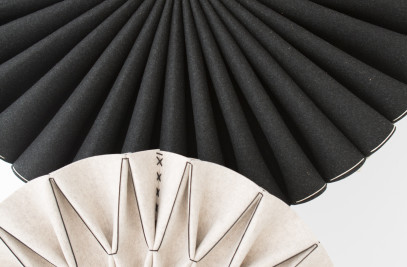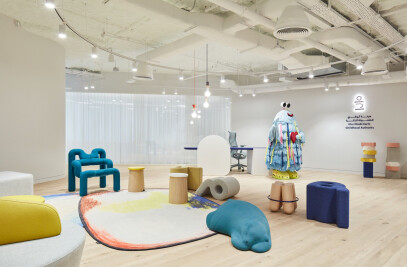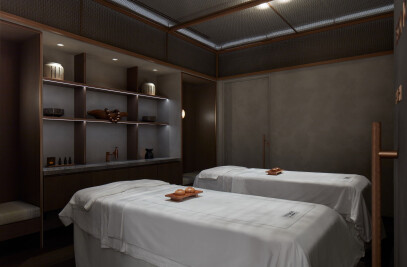Roar design studio has completed the new Middle Eastern headquarters of leading
Japanese pharmaceutical company Takeda, located in Dubai’s pioneering business
district, One Central. The 23,000 sq ft space blends traditional Japanese aesthetic with
modern data-driven efficiency to create a stunning contemporary office, anchored in its local environment.
Roar’s Founder and Creative Director Pallavi Dean explains: ‘Takeda wanted us to design
an office that rivalled their new HQ in Tokyo, Japan. We felt it was important to draw inspiration from the company’s Japanese heritage while also celebrating the local context in order to give the project a sense of place and differentiate it from other Takeda’s offices around the world – this is most definitely Takeda in Dubai, not Tokyo!’
Pallavi Dean continues: ‘Real design magic often happens when these two worlds – art and science – collide, and the new Takeda office is a clear example of this remarkable encounter. The space is designed around three themes - Japanese values, Emirati culture and data-driven design - resulting in a very intuitive yet reasoned project .’
The interior concept evokes key principles of the ancestral Japanese design philosophy
highlighting a minimal, restrained architectural language with shoji screen geometry and textured materials such as wood, raw concrete and paper. The boardroom echoes the layout of a Japanese tea house while the reception area references the genkan, the
traditional entrance of a Japanese home.
Rooting the HQ into its new home city, various Arab, specifically Emirati, design elements are incorporated into the scheme. A series of artworks by designer Khalid Shafar adorn the space, made using khoos – a palm leaf weaving technique that was traditionally applied to build house roofs and floor mats. The dried palm leaves are collected then cut and washed to weave.
Pallavi Dean explains: “This ancient Emirati craft is similar to the Japanese tatami method,
but while the Japanese use rice straw, Emiratis use palm tree leaves. We like this subtle
synergy in crafts between the two cultures”.
The interior design takes its essence from Takeda: the colour palette alludes to the Takeda red while the shape of its logo is referenced throughout. The company’s ethos dubbed ‘Takeda-ism’ and based on four key values – integrity, fairness, honesty and perseverance – is reflected in the material selection and sustainability goals.
Pallavi Dean comments: ‘The project is LEED silver certified - as per ASHRAE standards, the building has achieved a 12.3% savings on energy use, is well connected to public transport and is also provided with ample fresh air which helps in controlling pollutant
sources, removing contaminants and enhancing occupants’ health and comfort.’
Roar has collaborated with Herman Miller’s workspace specialists on Space Allocation
Modelling (SAM Analysis) in a bid to maximise the utilisation of the floor-plate. Applying the Herman Miller ‘Living Office’ framework, Roar has quantified a range of metrics such as square footage per employee and the percentage dedicated to individual, meeting, and reception areas to ensure optimal allocation of the space to tasks and experiences that are of best possible value to all end-users. As a result, 35% of the office is devoted to ‘hive’ zones for individual work; 29% to ‘meeting’ spaces; and 13% to ‘breakout’ areas for informal social interactions.
Another key element of the design is the inclusion of biophilic principles. Pallavi Dean says:
‘The idea of bringing the outdoors inside, in recognition of the inherent need of humans to
be in contact with nature, has always been at the forefront of Roar’s practice. Daylight
reduces fatigue; greenery reduces drowsiness; Kaplan’s Attention Restoration Theory, or
ART, proposes that exposure to nature is not only enjoyable, but can also improve focus
and concentration. In view of the recent pandemic, which reminded us of our far too
distant relationship with nature, I believe this is something that will become a must in most
interior design projects going forward.’
Materials Used:
- Herman Miller – Desks
- Haworth – Meeting Tables
- Geiger – Closed Office Furniture and Conference Room Chairs
- Kaprel – Glass Partitions
- Elitis – Textiles and Wall Coverings
- Camira & Kvadrat - Upholstery




































